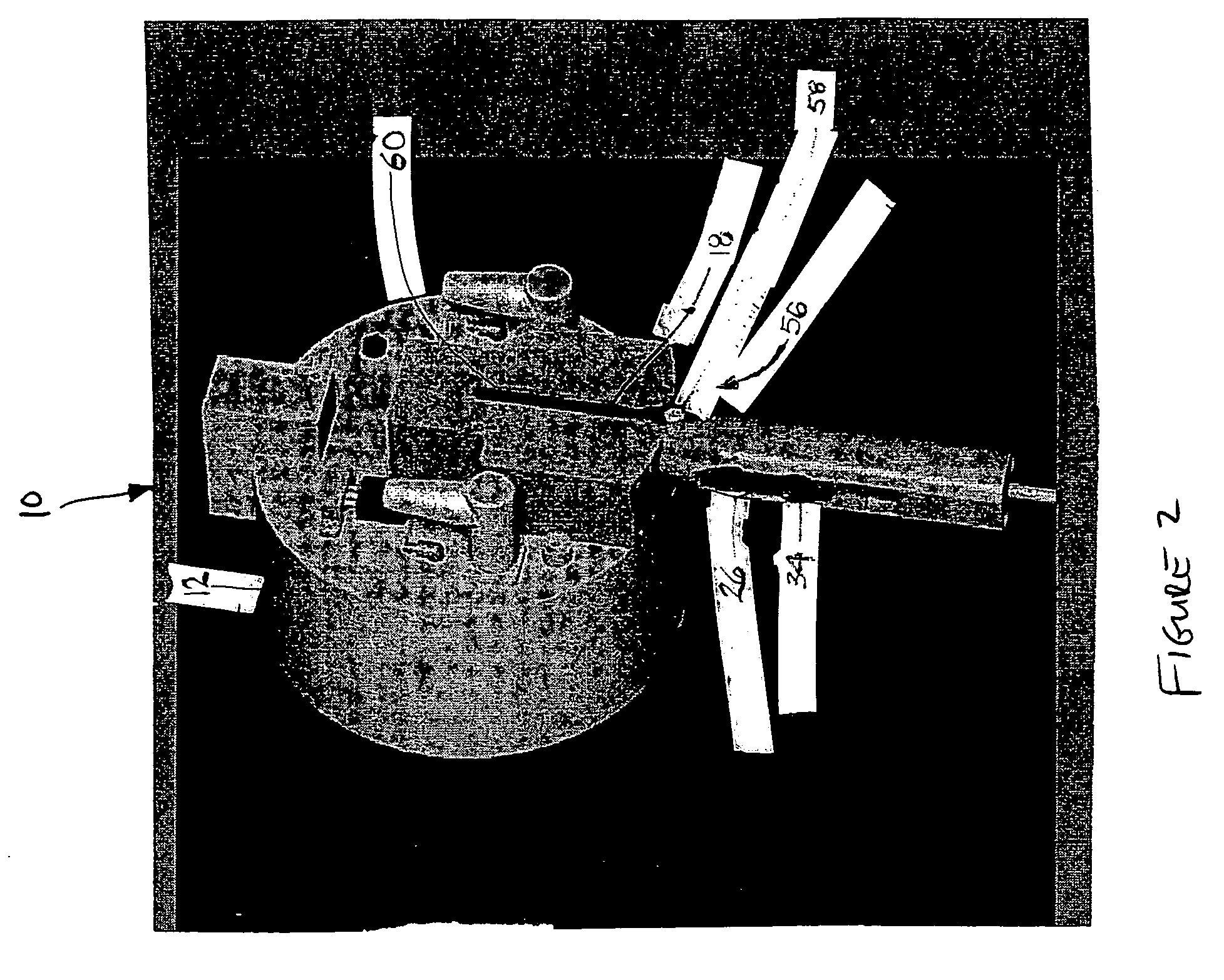Inductive power transfer system for underwater applications
- Summary
- Abstract
- Description
- Claims
- Application Information
AI Technical Summary
Benefits of technology
Problems solved by technology
Method used
Image
Examples
Embodiment Construction
[0024] As shown in FIGS. 1-7, this invention is directed to a power transfer system 10 usable with an underwater system 12, such as, but not limited to, an autonomous underwater vehicle 12. In one embodiment, the autonomous underwater system 12 may be an unmanned, untethered submarine that provides marine researchers with a simple, long-range and low-cost mechanism for gathering oceanographic data. The power transfer system 10 is configured to facilitate the transfer of power from a docking station 14 to the underwater vehicle 12 while in water, such as an ocean or other water body. The power transfer system 10 is particularly suited for use in saltwater where conventional systems have failed but may be used in other water types as well. The power transfer system 10 has been configured such that power may be transmitted between the docking station 14 and the underwater vehicle 12 without necessitating physical contact between connectors. Rather, the power transfer system 10 includes...
PUM
 Login to View More
Login to View More Abstract
Description
Claims
Application Information
 Login to View More
Login to View More - R&D
- Intellectual Property
- Life Sciences
- Materials
- Tech Scout
- Unparalleled Data Quality
- Higher Quality Content
- 60% Fewer Hallucinations
Browse by: Latest US Patents, China's latest patents, Technical Efficacy Thesaurus, Application Domain, Technology Topic, Popular Technical Reports.
© 2025 PatSnap. All rights reserved.Legal|Privacy policy|Modern Slavery Act Transparency Statement|Sitemap|About US| Contact US: help@patsnap.com



